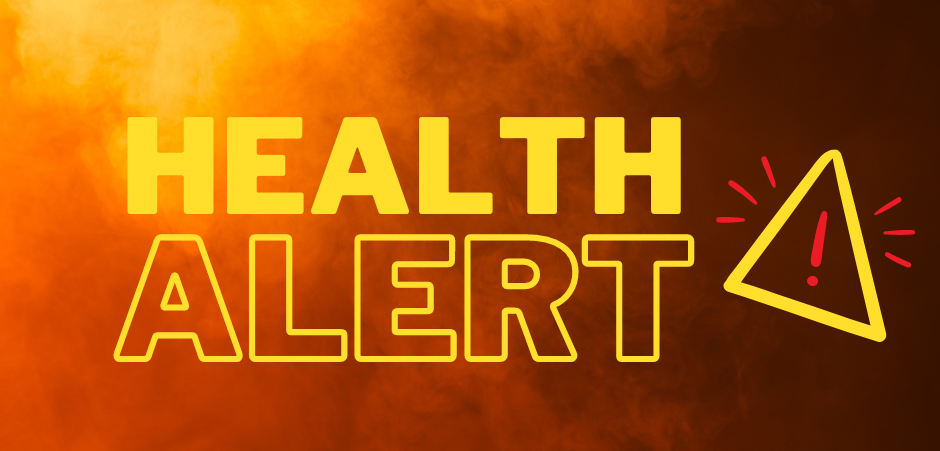Situation (as of 6/7/23 1pm):
The smoke from wildfires over Quebec and Nova Scotia, Canada continues to cause elevated fine particulate matter (PM2.5) over the northeast part of the United States, including Connecticut and the Valley. There is an area of dense smoke that is modeled to move into Connecticut on Thursday, June 7, 2023 with higher smoke density expected than what was observed on Tuesday, June 6, 2023.
The highest concentrations of smoke is expected to stay in Connecticut through Wednesday evening and into the early hours of Thursday. Lower concentrations within the region may approach or exceed unhealthy standards.
Individuals can visit www.AirNow.gov and search the current air quality for their zip code or do the same by downloading the mobile AirNow app.
What is the U.S. Air Quality Index (AQI) and How Does it Work?
What is the U.S. Air Quality Index (AQI)?
The U.S. AQI is EPA’s index for reporting air quality.
The U.S. Environmental Protection Agency (EPA) has a scale called the Air Quality Index (AQI) for rating air quality. This scale is based on the National Ambient Air Quality Standards (NAAQS).
Think of the AQI as a yardstick that runs from 0 to 500. The higher the AQI value, the greater the level of air pollution and the greater the health concern. For example, an AQI value of 50 or below represents good air quality, while an AQI value over 300 represents hazardous air quality.
For each pollutant an AQI value of 100 generally corresponds to an ambient air concentration that equals the level of the short-term national ambient air quality standard for protection of public health. AQI values at or below 100 are generally thought of as satisfactory. When AQI values are above 100, air quality is unhealthy: at first for certain sensitive groups of people, then for everyone as AQI values get higher.
The AQI is divided into six categories. Each category corresponds to a different level of health concern. Each category also has a specific color. The color makes it easy for people to quickly determine whether air quality is reaching unhealthy levels in their communities.
¿Qué es el Índice de calidad del aire de EE. UU. (AQI)?
El AQI de EE. UU. Es el índice de la EPA para informar la calidad del aire.
Imagínese que el AQI es una regla que va de 0 a 500. Cuanto más alto es el valor del AQI, mayor es el nivel de contaminación atmosférica y mayor la preocupación para la salud. Por ejemplo, un valor del AQI de 50 representa buena calidad atmosférica con escaso potencial para afectar a la salud pública, pero un valor del AQI superior a 300 representa una calidad atmosférica peligrosa.
Por lo general, un valor del AQI de 100 se corresponde con la norma nacional de calidad del aire para el contaminante, que es el nivel que la EPA estableció para proteger la salud pública. Por lo general, los valores de AQI inferiores a 100 se consideran satisfactorios. Cuando los valores del AQI son superiores a 100, la calidad del aire se considera insalubre, en primer lugar, para ciertos grupos de personas sensibles, y luego para todos a medida que los valores del AQI aumentan.
A fin de facilitar su interpretación, el AQI se divide en seis categorías. Cada categoría se corresponde con un nivel diferente de preocupación para la salud. La EPA ha asignado un color específico a cada categoría del AQI para ayudar a las personas a interpretar rápidamente si la contaminación del aire está llegando a niveles insalubres en sus comunidades.
What is the current ?
The fine particulate matter (PM2.5) levels are currently categorized as Unhealthy for Sensitive Groups.
People with heart or lung disease, older adults, children and teens – take any of these steps to reduce your exposure:
– Avoid strenuous outdoor activities.
– Keep outdoor activities short.
– Consider moving physical activities indoors or rescheduling them.
Everyone else – take any of these steps to reduce your exposure:
– Choose less strenuous activities (like walking instead of running) so you don’t breathe as hard.
– Shorten the amount of time you are active outdoors.
– Be active outdoors when air quality is better.
Resources
- CT DEEP maintains this webpage dedicated to air quality: https://portal.ct.gov/DEEP/Air/Forecasting/AQI/Air-Quality-Index?fbclid=IwAR3TSSSbvUBHEphGhso2pZc1W8pKuzvyYlYUsCfui58YlO2iPuPJWU2SVhM
- You may call the Air Quality Index Hotline at (800) 249-1234 or (860) 424-4167 for the forecast or link to www.Airnow.gov for the most current air quality information

